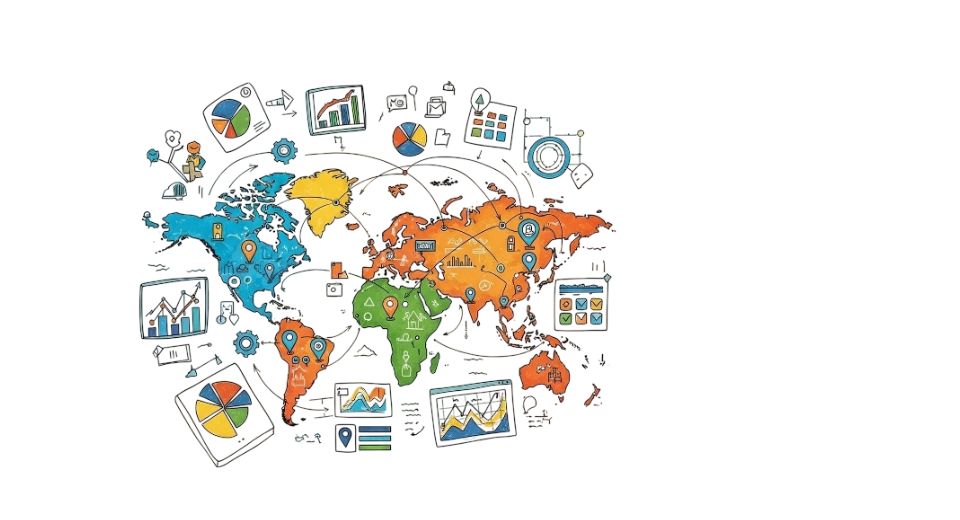
Jul 02, 2025

As expounded by Metastat Insight, the Global Location Analytics market is winning recognition with its growing role in the larger scenario of digital transformation. Organizations from all industries are starting to recognize the strategic advantage that real-time geographic information presents when combined with behavioral insights. Location-based intelligence, previously limited to logistics and navigation, is today revolutionizing the way organizations know their audiences, make decisions, and allocate resources. This growth is not fueled by simple data gathering but by the effective interpretation of spatial patterns, enabling companies to move with increased accuracy and confidence.
Global Location Analytics market is estimated to reach $26,562.06 million in 2025 with a CAGR of 13.5% from 2025 to 2032.
The increasing use of mobile devices and networked technologies has provided a context in which geographic setting can be captured and converted into actionable results. In urban development, marketing, or public safety, spatial intelligence is making decisions in the background. These tools are no longer merely about mapping points to a map; they're about detecting unseen patterns that conventional methods of data can't see. This subtle ability is turning location-based platforms into an integral component of enterprise initiatives, particularly in highly competitive or service businesses.
This transition is particularly notable due to the subtle inclusion of location analytics within existing infrastructure. As opposed to earlier waves of innovation that tended to require companies to implement completely new systems, the new developments are typically added to existing tools. From customer touchpoint systems to inventory management systems, the spatial layer now operates behind the scenes, enhancing each process it is a part of. This behind-the-scenes operation enables companies to remain nimble without drastic overhauls, allowing adoption to be less invasive and more organic.
Here at the center of this evolution is an expanded understanding of how physical motion and behavioral purpose are connected. Foot traffic of consumers, routing for delivery, emergency response time each holds patterns that, when mapped and decoded in the right way, provide telling stories. Visual Storytelling is equally necessary here as an algorithm behind it. The dashboards and maps that provide insight are made not only informative but also comfortable, so that stakeholders can quickly understand them without the need for technical skills.
At the same time, advances in geostational technology have enhanced accuracy and enabled a rich array of variables. Satellite images, GPS and sensor inputs are now more accurate and available than ever, and it has increased the quality of location-based decision making. The power to forecast demand, predict mobility or to estimate risk is no longer estimated, but refers to both time and location based on maximum information. These tasks are especially useful in industries such as retail sales, transport and emergency management, where time and proximity often determines success or failure.
Additionally distinguishes the current landscape, here is the cooperative nature of innovation. Public and private actors are searching for general interests in taking advantage of geographical intelligence to address issues such as rush, stability and fairness in access to services. The coming of AIMS together has given rise to collaborative data efforts and multi-party partnerships that cross the boundaries of the classical industry. These initiatives are creating ecosystems in which geographical references guide commercial strategy, but also have policy formation and community plan.
Another aspect to consider is now moral focus on how location data is accumulated and used. As the issues of privacy intensifies, companies feel pressure to provide assurance that the value of geographical intelligence is not purchased at the price of the user trust. Consent models, anonymization, and open data governance are becoming central to location analytics platform design. These steps are not only legal requirements but also strategic assets, assisting in the creation of confidence among users and stakeholders.
The more advanced the tools become, the more essential is the role played by human interpretation. Whatever the sophistication of the algorithm, human context always provides the meaning to spatial patterns. A heatmap will show crowd density, but local knowledge describes why the crowds congregate in particular locations at specific times. This synergy between machine insight and human experience prevents technology from being abstract-rather-than-real-world-obsessed.
Bringing this view full circle, the research report presented by Metastat Insight on the Global Location Analytics market points to an accelerating change in how companies think about and use spatial data. What was niche is now mainstream, not because of hype but because it has quietly been integrated and found to have impact. As companies increasingly align their operations with geographic insight, the industry will experience even more innovation not fueled by novelty, but by utility and applicability. The worth of location analytics today is not in standalone use cases but in its capacity to inform everyday decisions with nuanced, contextual understanding.
Drop us an email at:
Call us on:
+1 214 613 5758
+91 73850 57479